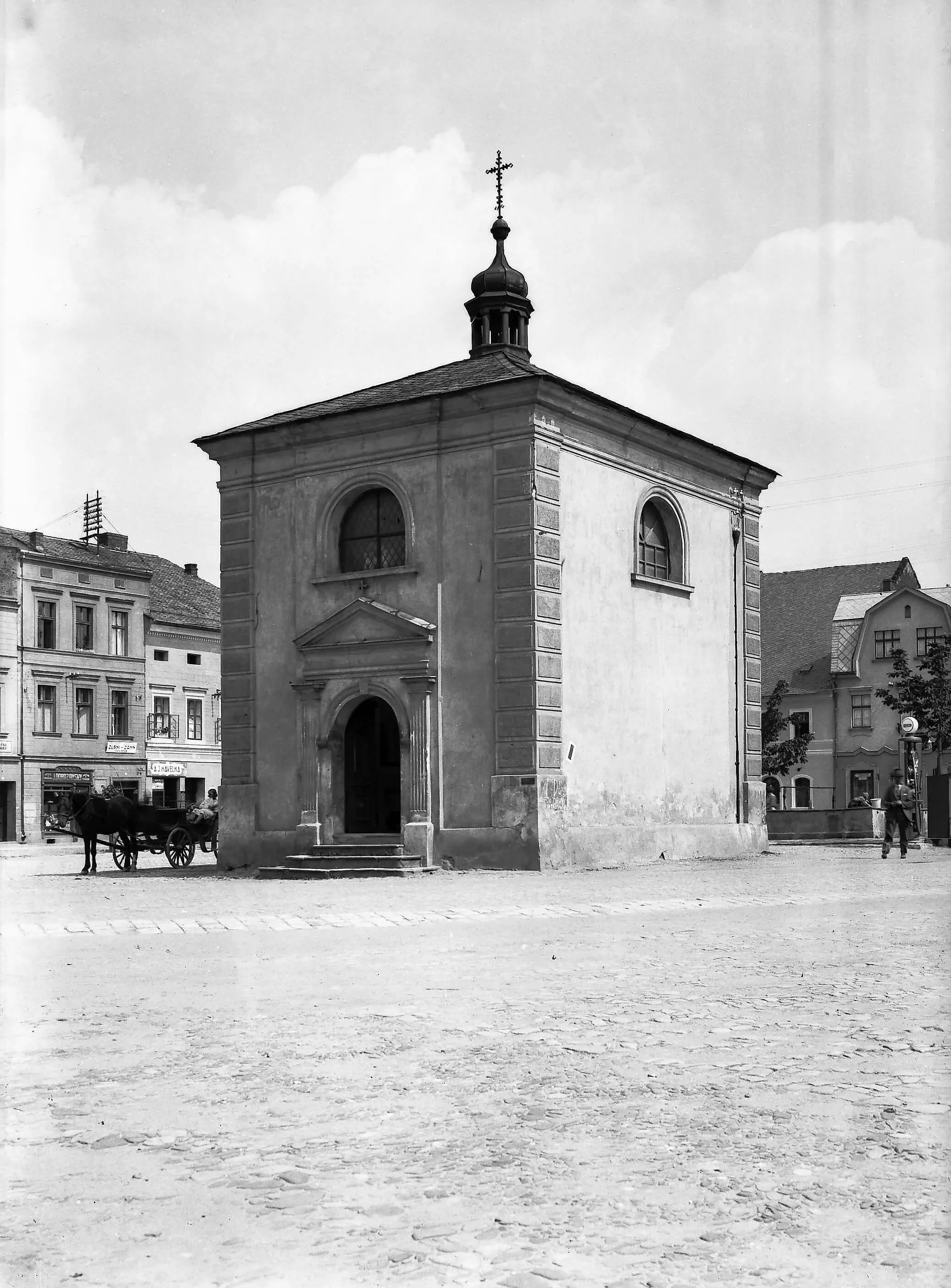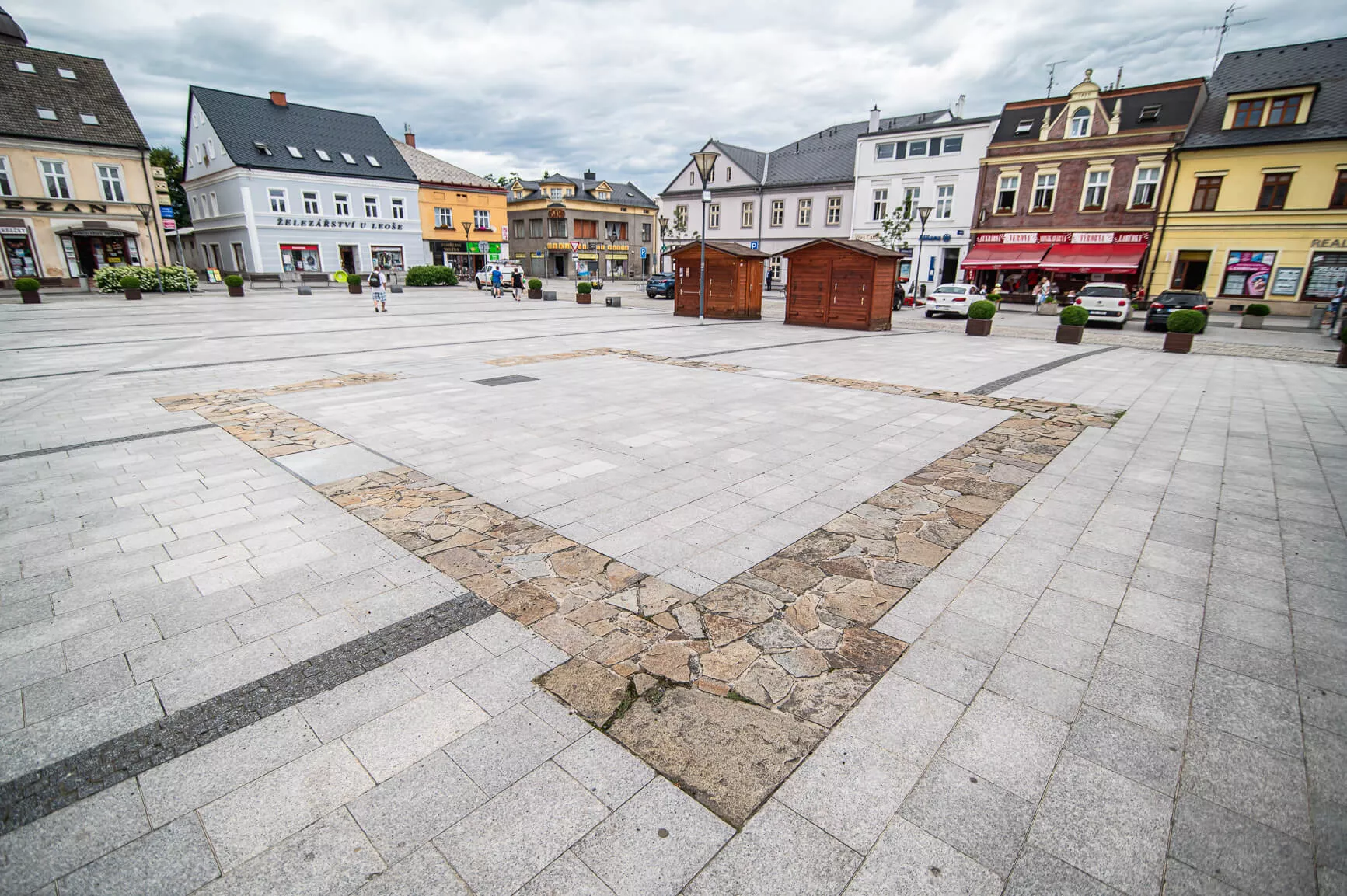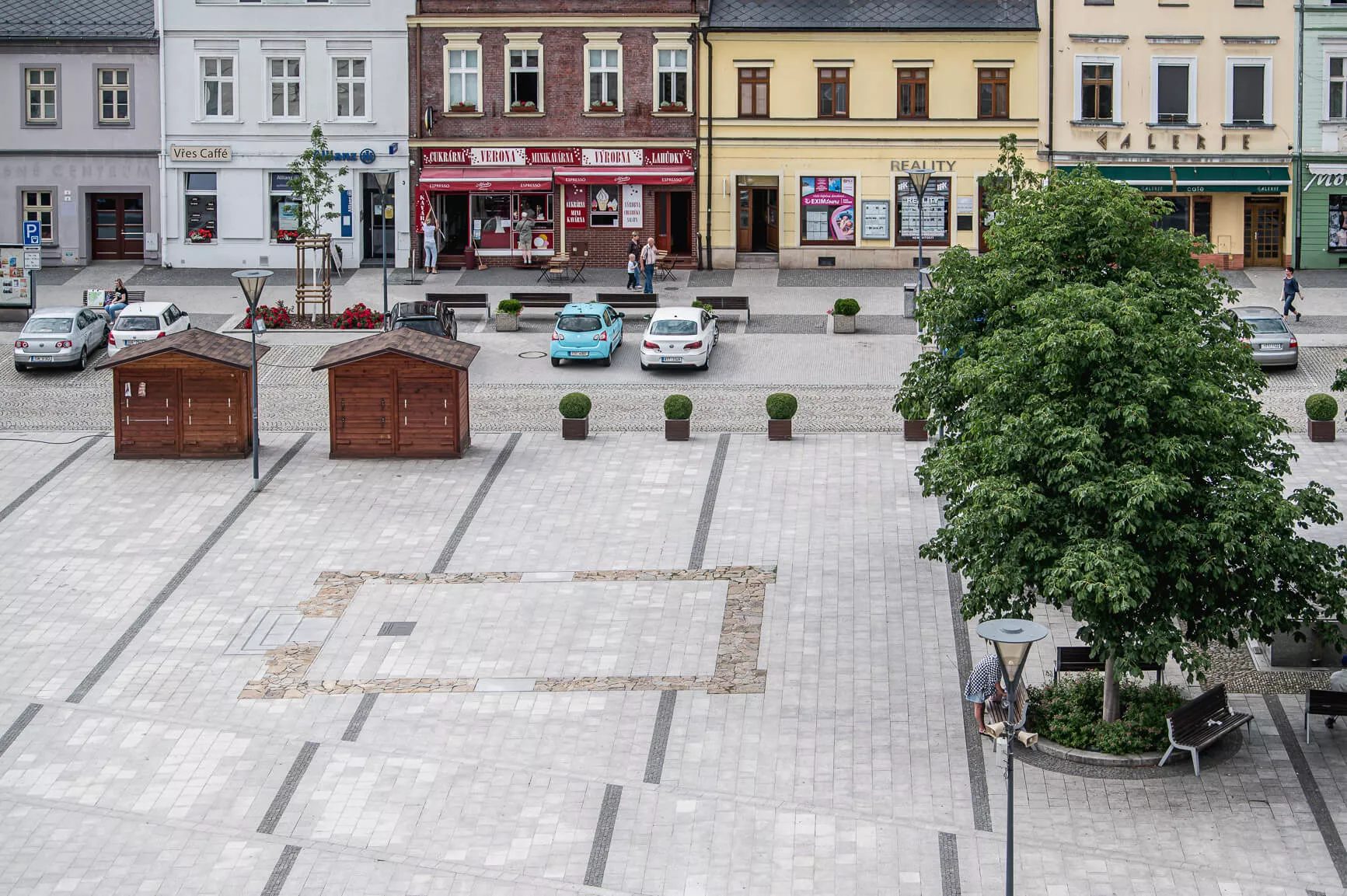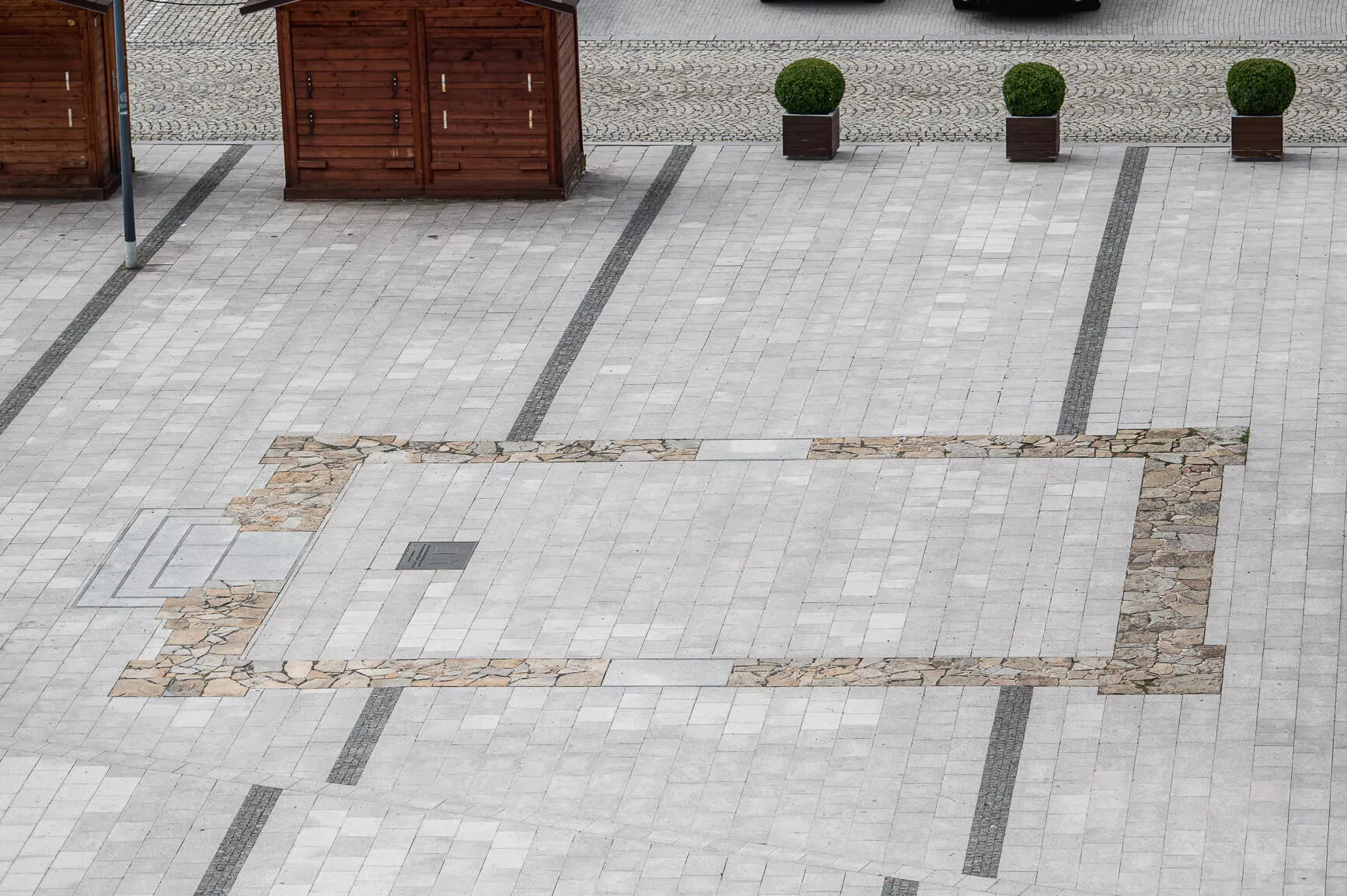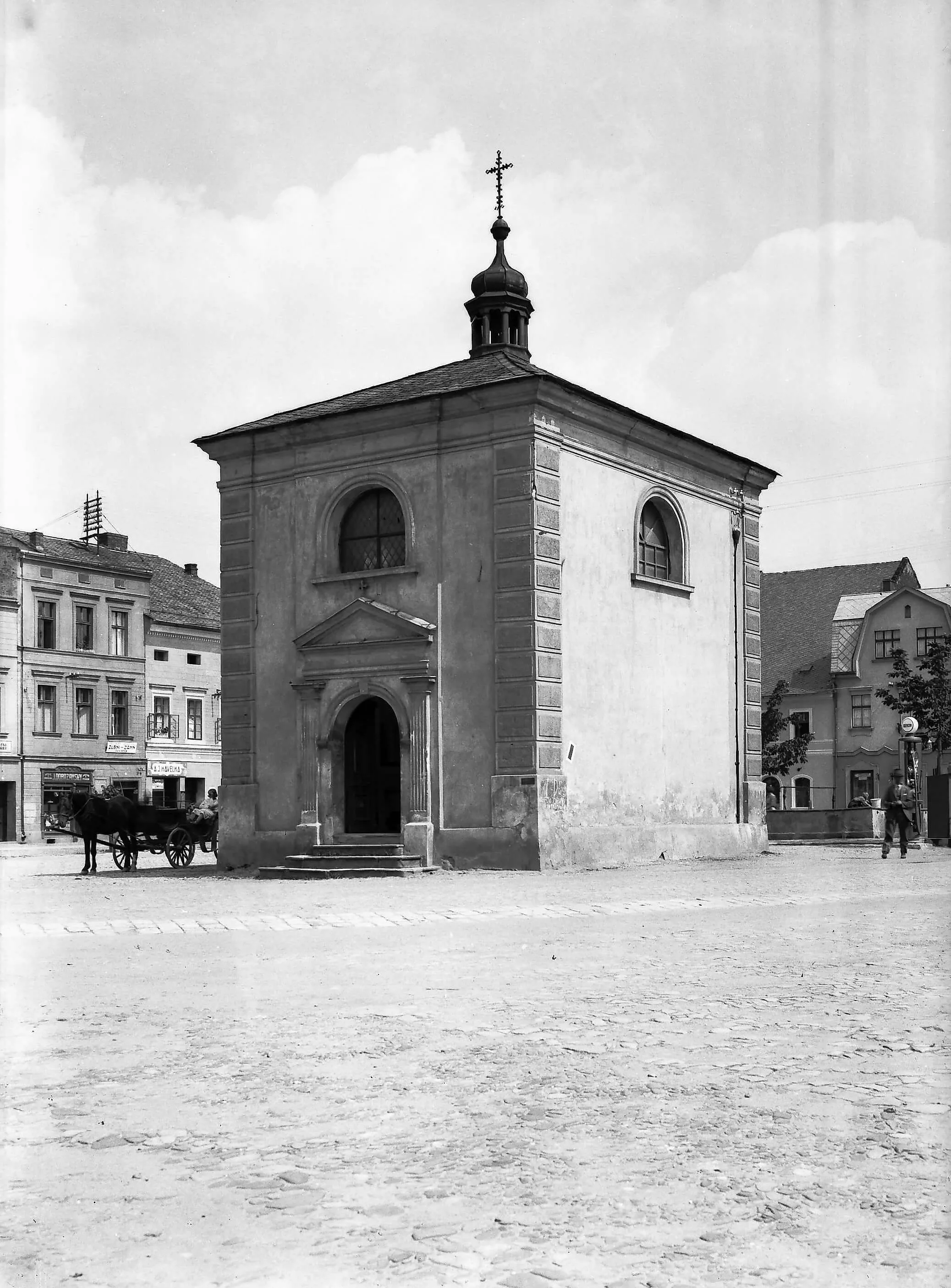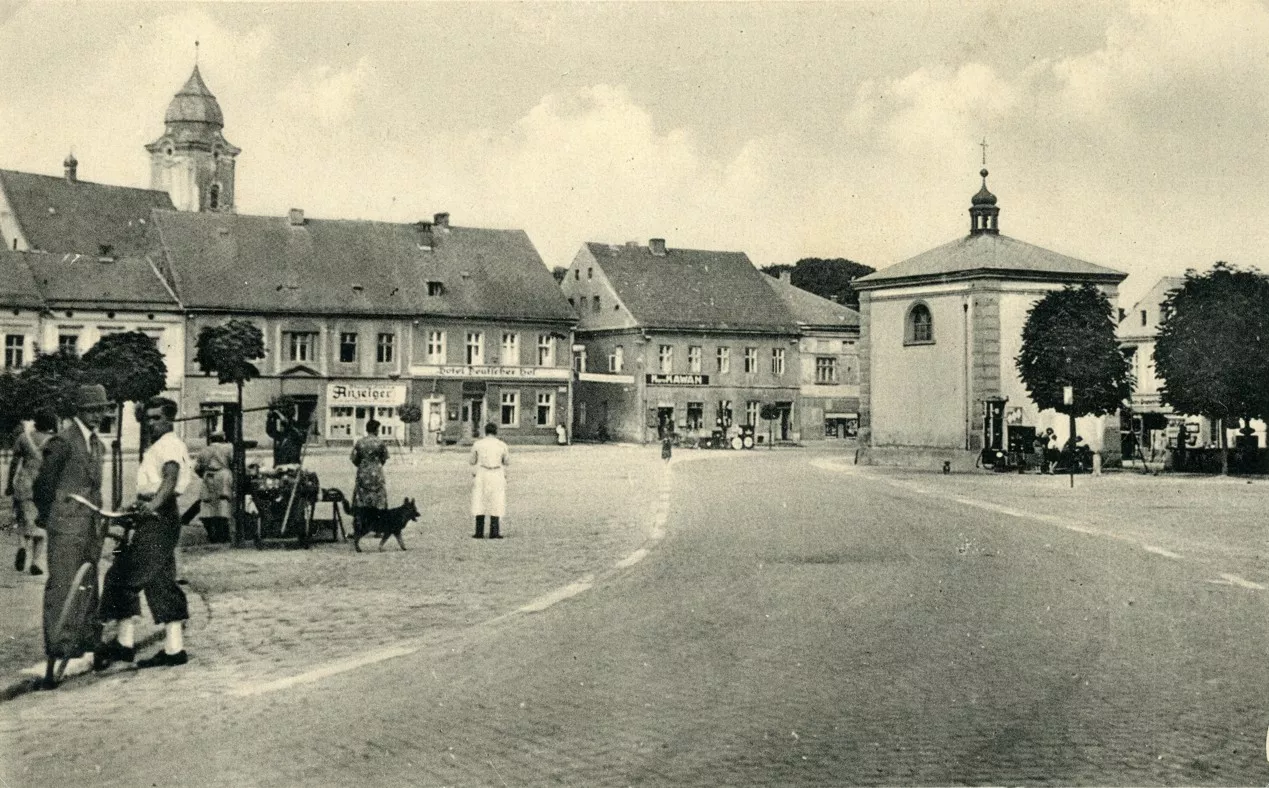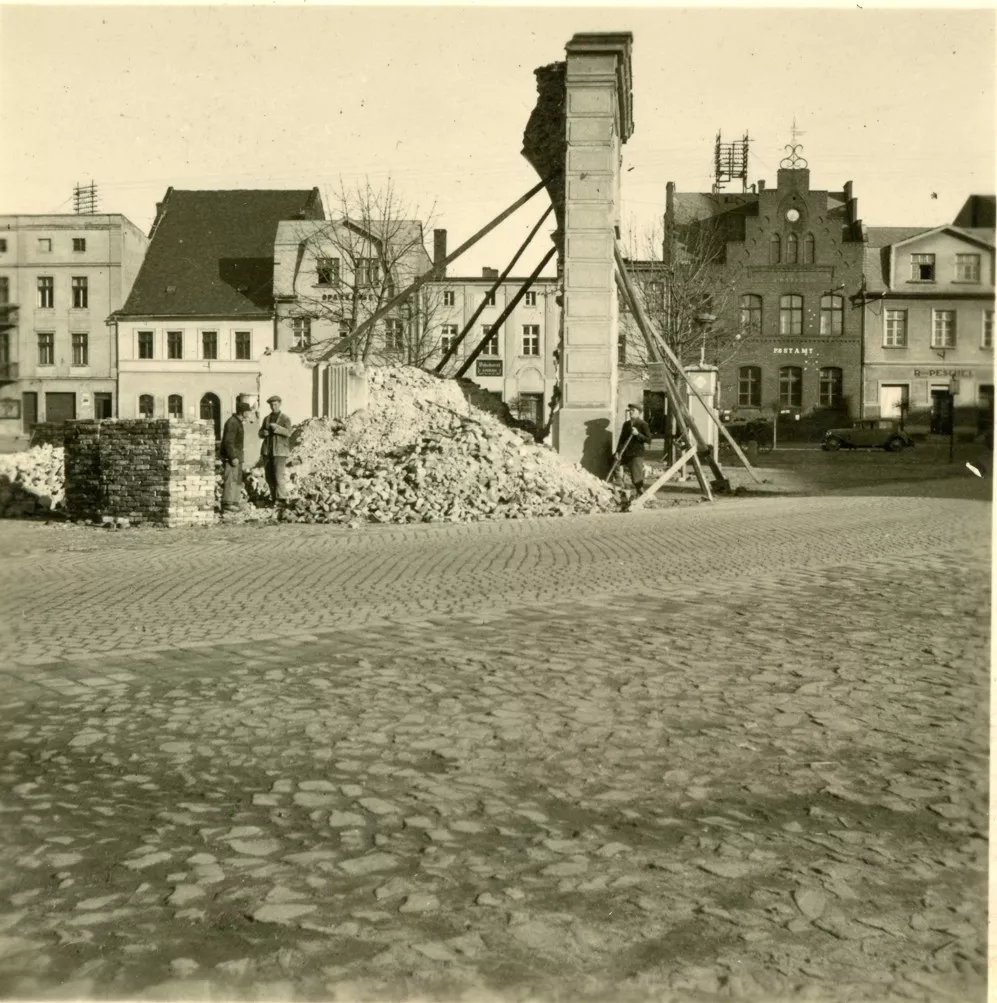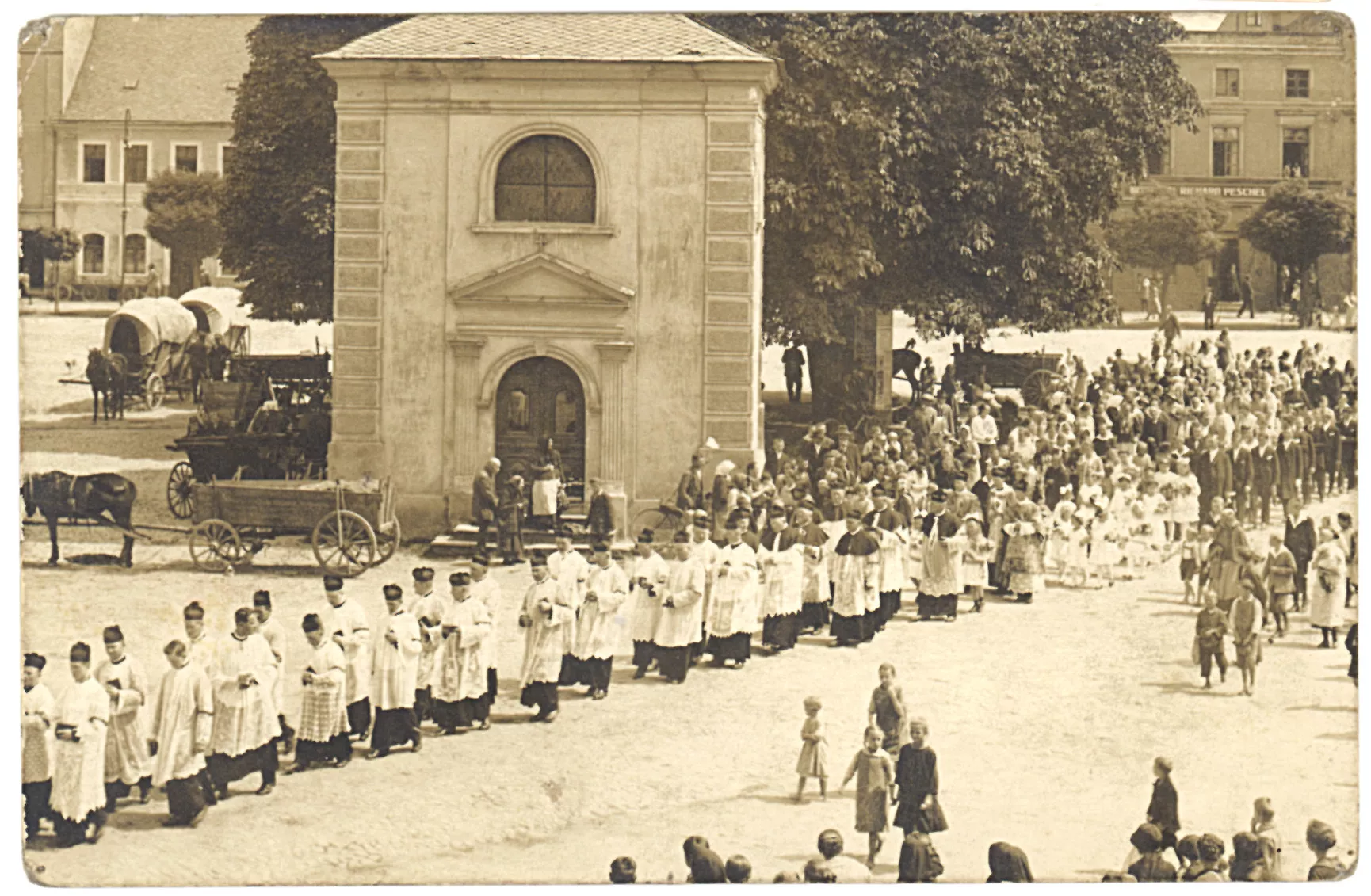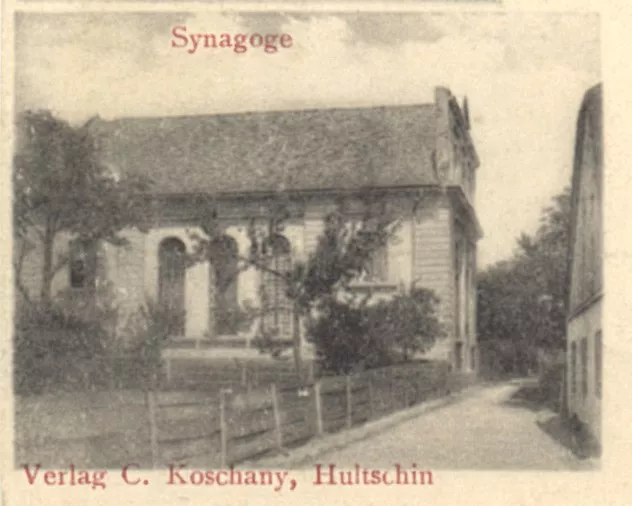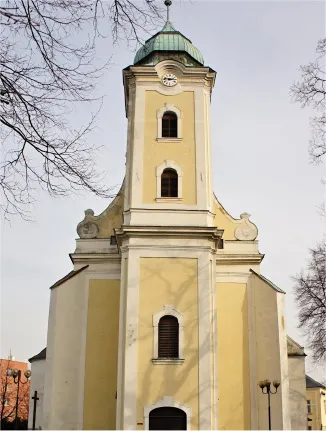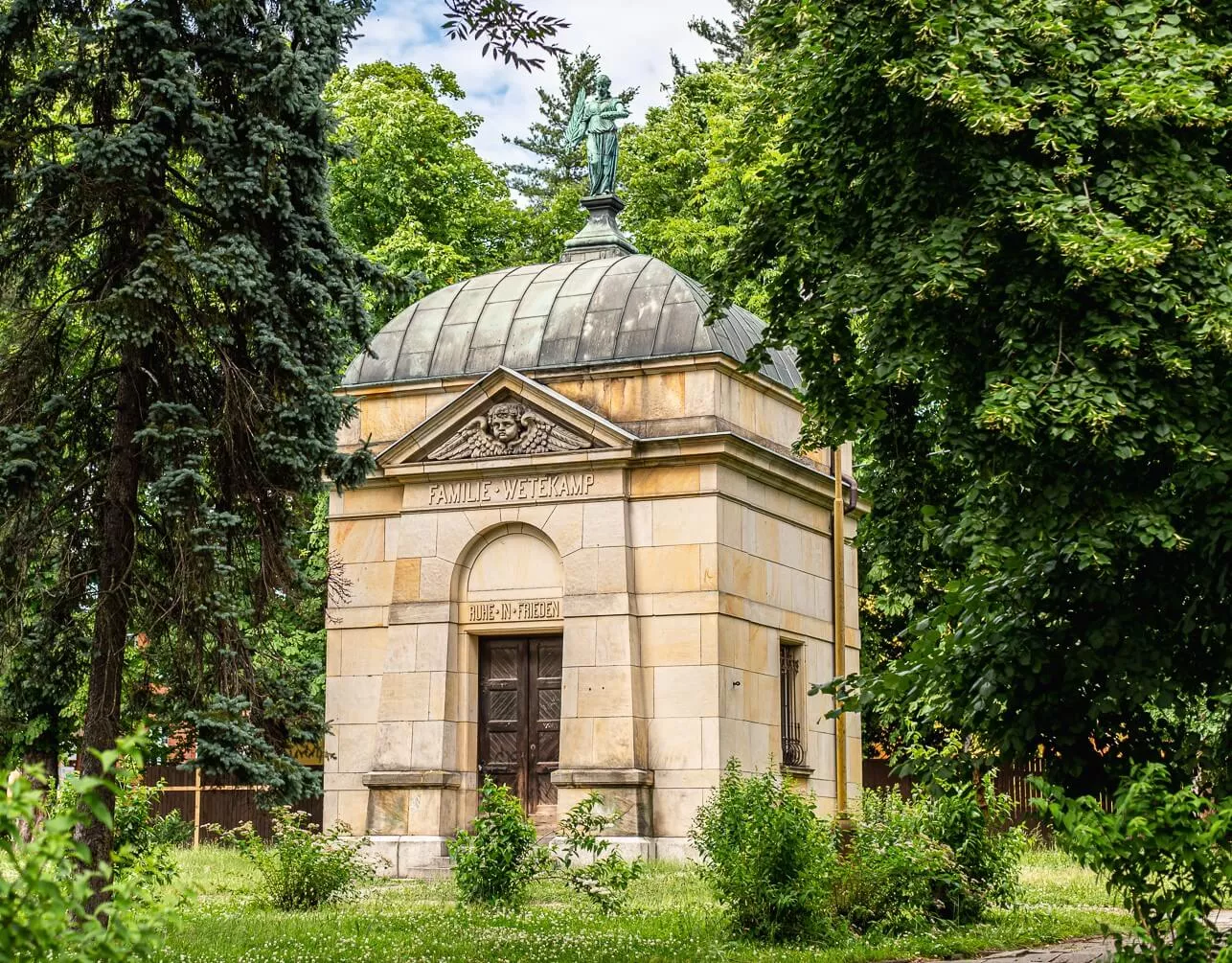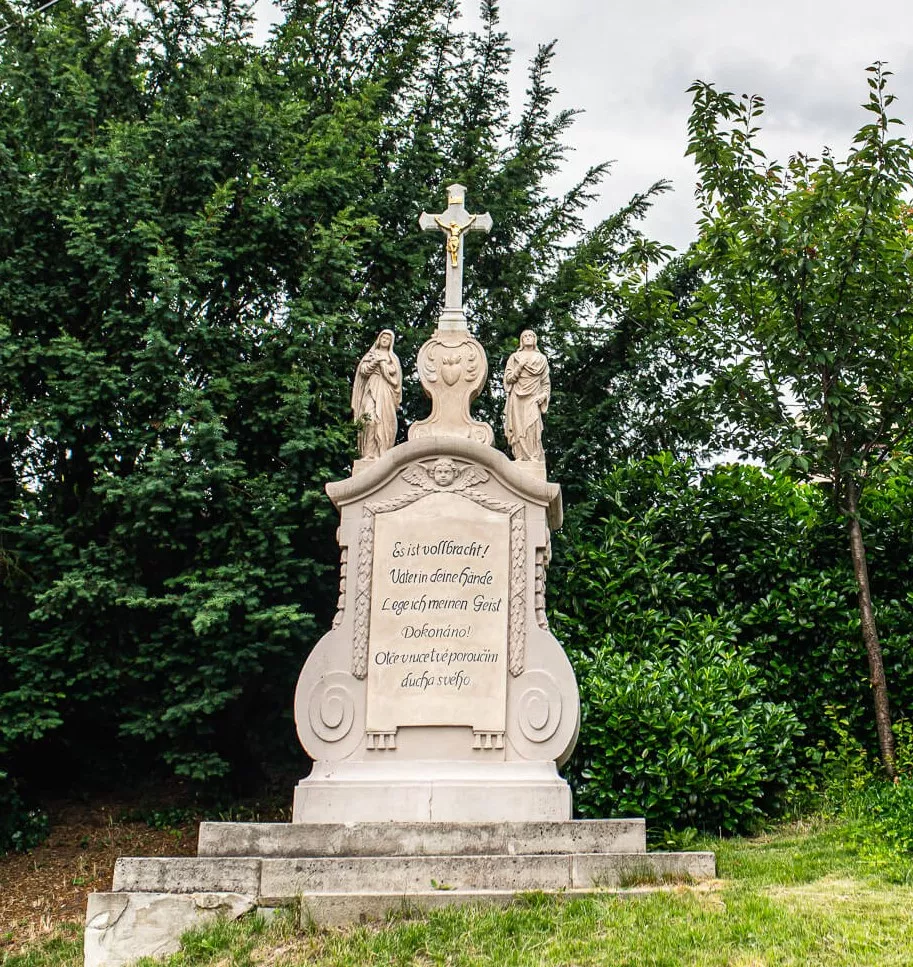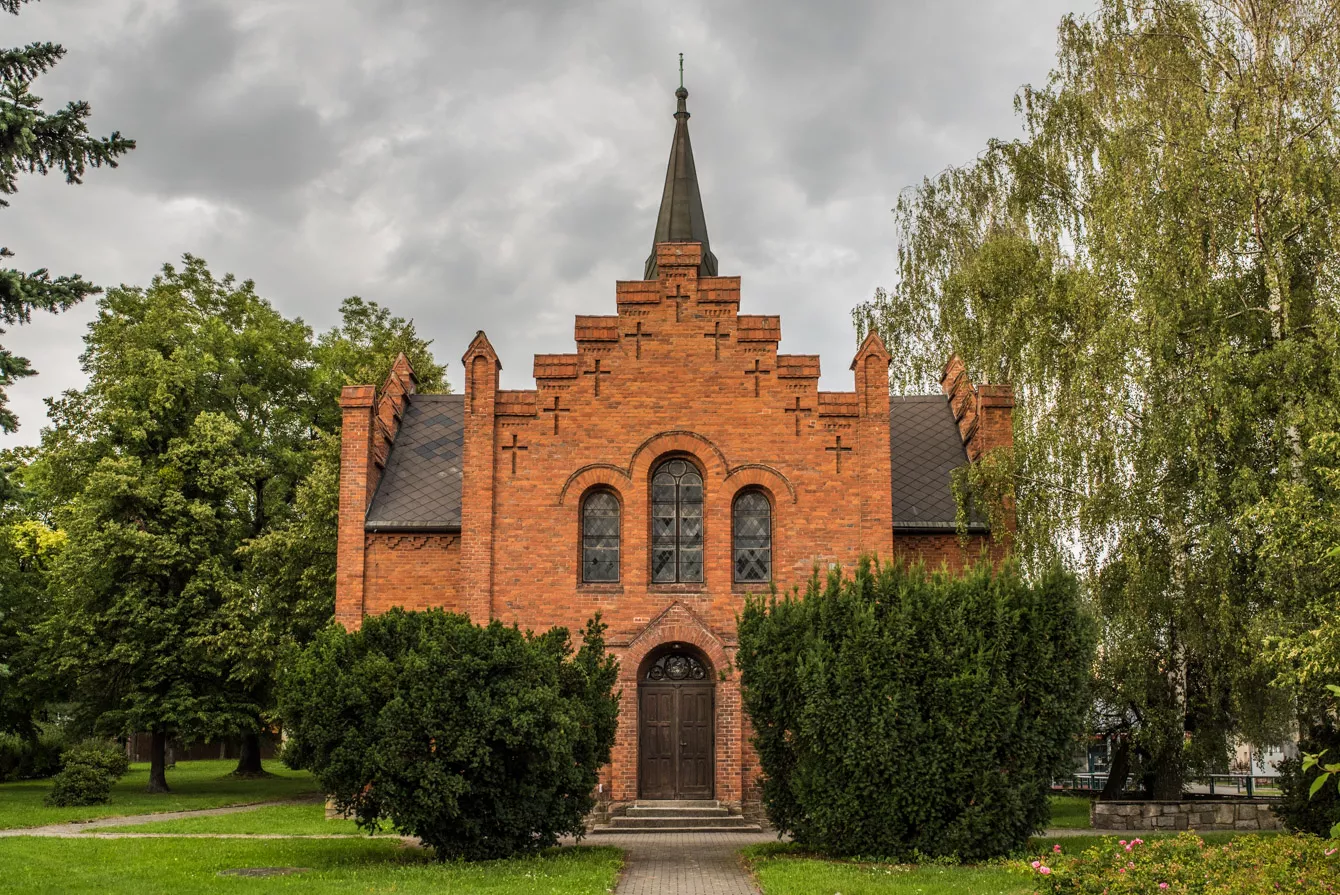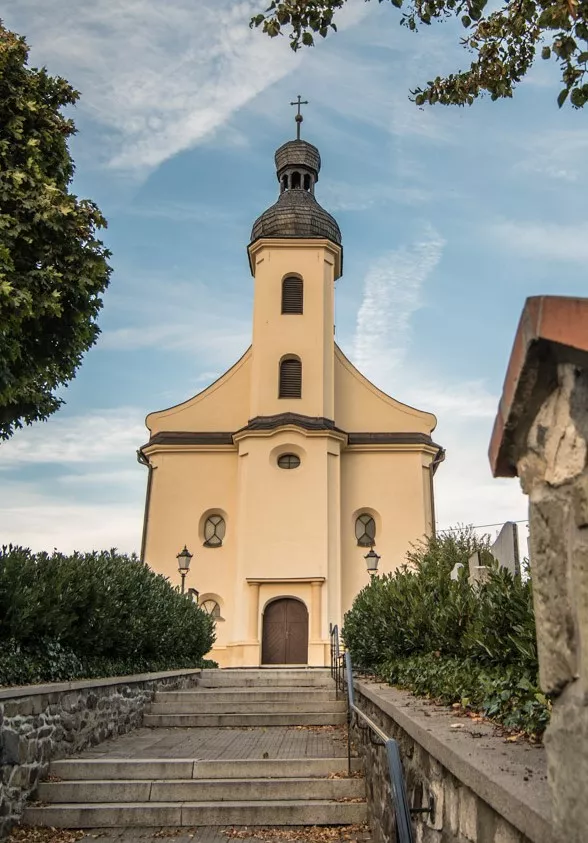From 1725, the small Chapel of St John of Nepomuk was part of the square’s dominant features. It was built by the then owner of the Hlučín estate, Count Jan Josef of Gašín (1681–1738), amid the growing cult of the new Czech saint after his beatification in 1721. The chapel was a simple Baroque centralised structure of almost square plan, with a low tent roof topped by a lantern and onion dome. The front was dominated by a portal framed by an aedicule, while the corners were accentuated with rusticated pilaster strips. The chapel was vaulted, and the interior was divided horizontally into two stages by a continuous cornice beneath the windows.
The chapel suffered damage on several occasions. In the great town fire of 12 March 1761, the roof burned, the vault fell in, and the heat cracked the masonry; all the original artworks were destroyed. In 1796, the dean Josef Ignác Bolík (?–1798) had the chapel repaired at his own expense, with a reed ceiling and interior painting. The roof needed repeated repairs; in 1840, after the covering had been stripped, a heavy downpour so soaked the painted ceiling that it fell away in parts. Only in 1850 was it replaced by a domical vault and the walls were tied with iron cramps. An early-Baroque altar of the 1660s was installed at the front. Around 1900, the original Baroque painting of the saint was replaced by a new one, perhaps from the workshop of the Munich painter Benedikt Müller. Further repairs were carried out in 1906 and 1936 (a new façade and roof covering).
The chapel stood in the centre of the square until spring 1940, when a decision was taken to demolish it. Three reasons are discussed: besides its structural condition, the chapel was an obstacle to traffic, as the main route from Opava to Ostrava ran diagonally across the square. The chief reason, however, was likely ideological: to remove a monument recalling previous affiliation with the Czech lands from the square, then named the Adolf Hitler Ring. The true motive remains disputed.
